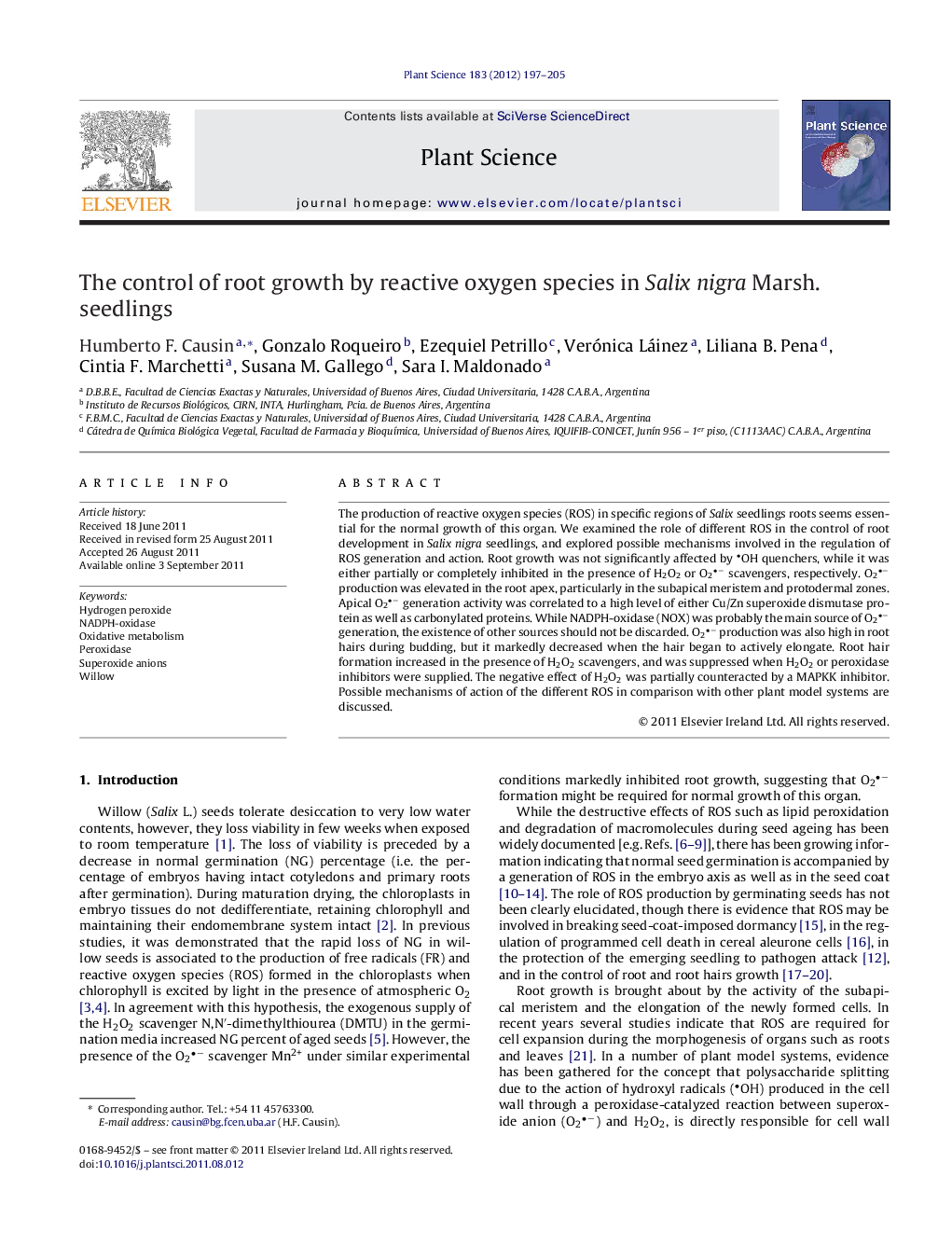| Article ID | Journal | Published Year | Pages | File Type |
|---|---|---|---|---|
| 2017579 | Plant Science | 2012 | 9 Pages |
The production of reactive oxygen species (ROS) in specific regions of Salix seedlings roots seems essential for the normal growth of this organ. We examined the role of different ROS in the control of root development in Salix nigra seedlings, and explored possible mechanisms involved in the regulation of ROS generation and action. Root growth was not significantly affected by OH quenchers, while it was either partially or completely inhibited in the presence of H2O2 or O2− scavengers, respectively. O2− production was elevated in the root apex, particularly in the subapical meristem and protodermal zones. Apical O2− generation activity was correlated to a high level of either Cu/Zn superoxide dismutase protein as well as carbonylated proteins. While NADPH-oxidase (NOX) was probably the main source of O2− generation, the existence of other sources should not be discarded. O2− production was also high in root hairs during budding, but it markedly decreased when the hair began to actively elongate. Root hair formation increased in the presence of H2O2 scavengers, and was suppressed when H2O2 or peroxidase inhibitors were supplied. The negative effect of H2O2 was partially counteracted by a MAPKK inhibitor. Possible mechanisms of action of the different ROS in comparison with other plant model systems are discussed.
► ROS exert a specific role in the regulation of root growth in willow seedlings. ► The action of certain ROS differs from other plant model systems. ► O2− generation in the apical region is necessary for the whole organ growth. ► Normal development of root hairs requires the maintenance of low H2O2 levels. ► Experimental evidence indicate that ROS action may depend on secondary messengers.
